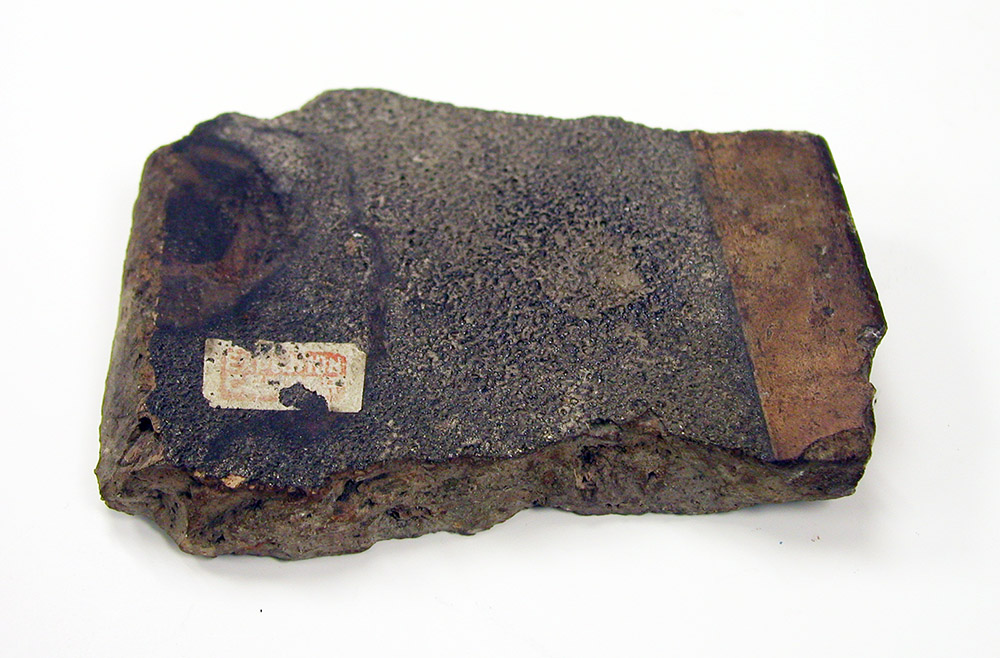Roof Tile from Hiroshima

The heat from the atomic explosion over Hiroshima caused the severe blistering on this roof tile.
Most of the buildings in Hiroshima were constructed of wood and were destroyed by the blast and/or the resulting fires. In many cases, all that remained were fragments of the ceramic tiles employed as roofing material. This particular example is believed to come from the Sairensi Temple. The smooth unblistered portion of the tile (the right end) was protected by the overlapping roof tile above it.
This type of blistering was observed out to ž of a mile from the explosion center and required temperatures of 1800°C.
The thermoluminescence of roof and other types of tile was also studied in efforts to estimate the radiation exposures. This involved extracting tiny quartz crystals from the tiles, cleaning, and heating them under controlled conditions. The intensity of the light emitted by the crystals during the heating process could then be related to the radiation exposure. This information was then be used to help estimate the exposures of individuals who were exposed at or near the location that the tile came from.
Kindly donated by Robley Evans.

4 interesting facts about the roof tile from Hiroshima
Read more about the roof tile from Hiroshima located at ORAU’s Museum of Radiation and Radioactivity, including how it ended up in Oak Ridge.
